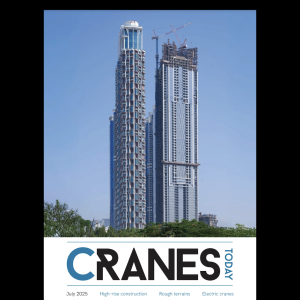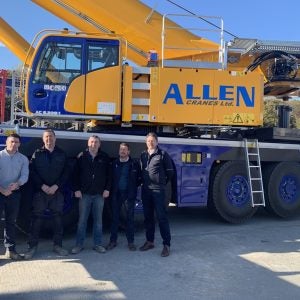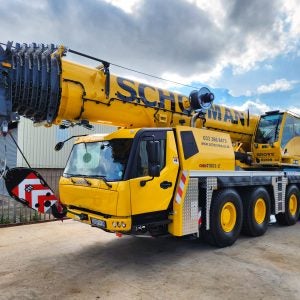The investment and shake-up plan aims to achieve increased production of a full line of cranes at the Shido plant, aerial platforms at the Takamatsu plant and truck loader cranes at the Tadotsu plant.
Shikoku Kiko, a manufacturing subsidiary of Tadano Ltd, currently owns the Tadotsu facility. It produces components for mobile cranes and truck loaders.
Tadano said the realignment of the production structure would be carried out gradually so not to disturb routine operations at each of the plants, thus targeting the end of 2008 for its completion.
At the Shido-based plant, Tadano wants to create a manufacturing structure to raise production volumes of rough terrain cranes. It also wants to install assembly lines for truck crane carriers, raise production of booms and cylinders and renew equipment. This will include mass production of booms and cylinders for construction cranes, including those destined for Faun GmbH, a German subsidiary of Tadano.
A new factory building will be constructed at the Tadotsu plant. The new facility, which will be constructed on the current premises, will be a two-level steel-frame construction to cover a total floor space of around 18,000 sq m. It is expected to cost 1.3bn Yen (€9m).
Construction is scheduled to start in April 2006 and be completed in January 2007.
Tadano Ltd will also invest a further $10million (€8.5m) in its Chinese joint venture company BQ-Tadano (Beijing) Crane Co Ltd.
With a boom in infrastructure in China and with focus on the 2008 Olympic Games in Beijing and the 2010 International Exposition in Shanghai, demand for cranes is high.
It appears that demand for construction equipment in the country, though temporarily declined due to the government controls introduced in 2004 to avoid an over-heating of the economy, is likely to continue growing.
Tadano estimated that around 10,000 units would be sold in total in China this year, compared to just 4,000 in 2001. Most of the demand, however, it said, features truck cranes by domestic crane manufacturers to the extent that those with a 25t (28USt) capacity or less account for as much as 90% of the work.
The Beijing facility has a maximum production capacity of 1,500 units each year. Because of the additional investment, the paid-up capital will rise to $30m (€25.5m).






